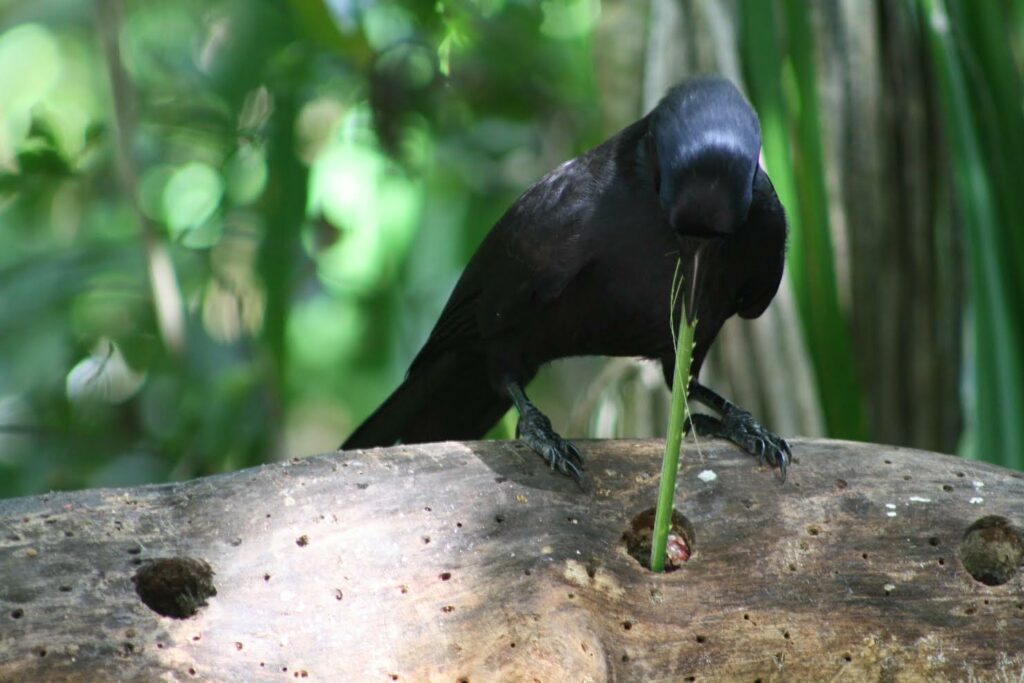Can crows make their own tools?

Crows, members of the Corvidae family, have long been celebrated for their exceptional problem-solving abilities and remarkable intelligence. Among the repertoire of their cognitive feats, the intriguing prospect of crows crafting their own tools has long fascinated researchers.
The Genius of Crow Cognition
Crows stand out in the avian world for their complex social behaviors, adaptability, and demonstrated intelligence. Their ability to solve puzzles, use tools, and exhibit social learning has propelled these birds into the spotlight of cognitive research.
Tool usage is a well-documented behavior among several corvid species. Crows have exhibited the use of tools in various contexts, such as using sticks to extract insects from trees or manipulating objects to access food in experimental settings.
Studies Demonstrating Tool Use by Crows
In a notable experiment conducted by Auguste von Bayern and colleagues, New Caledonian crows were observed crafting specialized tools to access food. The crows fashioned hooked stick tools by modifying twigs and plant stems, showcasing their capacity for tool innovation and problem-solving.
Another study led by Alex Taylor and colleagues observed the ability of crows to use multiple tools in sequence to retrieve food. The researchers provided the crows with a series of nested tubes that required various tools to access the food. The crows demonstrated not only tool use but also the ability to select and deploy objects in a sequence, indicating a sophisticated level of problem-solving.
Innovative Tool Crafting by Crows
The behavior observed in these studies highlights the remarkable ingenuity of crows in crafting tools for specific purposes. They exhibit the ability to modify natural materials, fashioning them into tools suited for particular tasks, demonstrating a level of cognitive complexity previously associated with only a few other animal species.
Crows display an astonishing level of problem-solving and innovation in their tool-making endeavors. They are known to create hooks or barbs on twigs by stripping the bark or shaping the end of the twig, effectively fashioning a tool resembling a hook. This crafted tool is then used to extract insects or grubs from crevices or holes, displaying a deliberate and adaptive behavior.
One of the most notable studies on crow tool crafting involved an experiment where researchers observed the crows’ ability to create and use hooked tools to obtain food. The study, conducted by scientists including Alex Kacelnik and Gavin Hunt, shed light on the remarkable cognitive abilities of these birds.
They used tools made from different materials and studied the crows’ ability to fashion new tools when presented with unfamiliar challenges, highlighting the crows’ problem-solving skills and capacity for tool innovation.
Implications and Evolutionary Significance
The ability of crows to create and use tools holds significant implications for understanding the evolutionary origins of tool use and problem-solving behaviors in animals. These observations suggest a level of intelligence and adaptive behavior previously underestimated in avian species.
Ongoing Research and Future Investigations
While current studies provide compelling evidence of tool crafting by crows, ongoing research aims to further explore the depth and breadth of their cognitive capabilities. Future investigations will delve deeper into understanding the underlying mechanisms and complexities of crow tool innovation, shedding more light on their remarkable problem-solving skills.
The evidence gathered from scientific studies showcases the exceptional cognitive abilities of crows, specifically their capacity to create and use tools for specific tasks. These birds demonstrate not only the ability to select and modify materials but also to fashion tools adapted to particular contexts, marking an important milestone in our understanding of avian intelligence.










